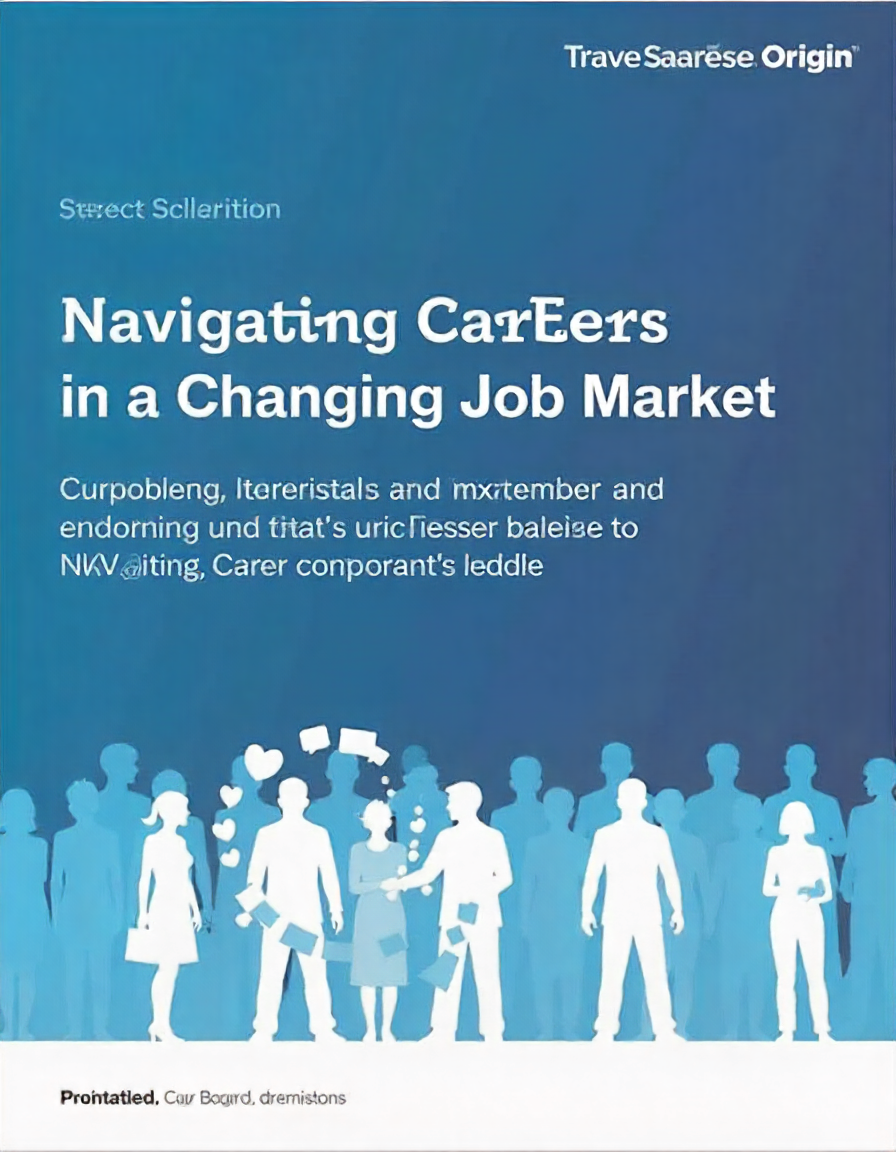Career transitions are no longer a rare occurrence. With rapid advancements in technology, shifts in global economies, and evolving workplace norms, today’s professionals are finding themselves pivoting into new roles, industries, or even completely different career paths more frequently than in the past. Gone are the days when staying in a single job or industry for decades was the norm. Today, adaptability and resilience are essential traits for navigating a dynamic job market and ensuring long-term career success.
This blog explores strategies for successfully managing career transitions, the challenges you might face, and the opportunities they present. Whether you’re switching industries, aiming for a promotion, or reentering the workforce, this guide will equip you with actionable insights to thrive in your new professional chapter.
Why Career Transitions Are Becoming More Common
Several factors are contributing to the rise in career pivots, including technological disruption, cultural shifts, and changing employee expectations. Understanding these trends can help contextualize the reasons for making a change and prepare you for the realities of today’s workforce.
1. Automation and Technological Advancements
Automation and artificial intelligence (AI) are altering the job landscape across industries. Routine, manual tasks are increasingly being replaced by machines, creating demand for roles focused on creativity, problem-solving, and technical expertise. Professionals may find themselves reskilling or even transitioning into entirely new industries to remain relevant.
2. The Appeal of Gig and Freelance Work
Traditional 9-to-5 positions are being supplemented by freelance gigs and project-based roles. Platforms like Upwork and Fiverr have made independent work more accessible, prompting professionals to explore flexible career options.
3. Employee Priorities Are Shifting
Work-life balance, purposeful work, and professional growth now weigh heavily on career decisions. Especially post-pandemic, workers are reevaluating priorities and looking for roles that align with their values and goals, leading to career transitions.
4. Career Longevity and Retirement Trends
With people living and working longer, it’s not uncommon to have multiple careers over a lifespan. Some professionals may make career pivots in their 40s or 50s as they seek new challenges or work environments that are more fulfilling.
Barriers to Overcome in Career Transitions
Though the idea of starting fresh can be exciting, career transitions are often accompanied by uncertainty and hesitation. Knowing the challenges beforehand can help you address them more strategically.
1. Fear of the Unknown
One of the most common barriers is fear—fear of failure, rejection, and the unfamiliar. These emotions are entirely natural but can hinder progress if not managed.
2. Skill Gaps
Switching industries or roles often requires learning new skills, which can feel daunting, especially when competing with more experienced candidates.
3. Financial Uncertainty
Taking a leap into a new career sometimes means starting at a lower salary level, taking time off to reskill, or dealing with uneven income while establishing yourself in a freelance capacity.
4. Perceived Lack of Experience
Even highly capable individuals might hesitate due to imposter syndrome or worries about not being “qualified” for a new field.
5. Navigating Employer Skepticism
Employers may be wary of candidates with unconventional paths if they don’t see how a non-linear background adds value to the role.
Strategies for Successfully Navigating Career Transitions
Though challenges exist, there are plenty of ways to prepare and ease your transition. Below, we’ll cover practical strategies to help you make your next career move with confidence.
1. Clarify Your Goals and Vision
Before jumping into a new career, take time to reflect on your motivations and long-term goals. Ask yourself the following questions:
- What do I truly value in a job?
- What am I passionate about?
- What skills or strengths do I bring to the table?
Having a clear sense of purpose will guide your decisions and help you stay focused during uncertain times.
2. Assess Transferable Skills
Transferable skills—such as communication, problem-solving, project management, and leadership—are universal and can be applied across various industries or roles. Identify these skills and highlight them when updating your resume or preparing for interviews.
For example:
- If you’re pivoting from teaching to corporate training, your ability to design educational programs and engage learners is highly transferable.
- If you’re moving from journalism to content marketing, your storytelling expertise and research skills can be framed as assets.
3. Invest in Learning and Upskilling
The modern job market rewards those who are willing to learn. If your target industry or role requires specific competencies, consider acquiring certifications or attending workshops.
- Online Platforms: Resources like Coursera, Udemy, and LinkedIn Learning offer affordable, flexible courses for honing in-demand skills.
- Bootcamps: Many industries, such as technology and UX design, offer immersive bootcamps that accelerate your entry into the field.
- Professional Development Programs: Membership organizations like PMI (Project Management Institute) and SHRM (Society for Human Resource Management) often offer specialized training programs.
4. Network Intentionally
The saying “It’s not what you know, it’s who you know” still holds weight. Networking helps you tap into the hidden job market and gain insights from people already working in your desired field.
- Attend industry events and webinars.
- Engage on LinkedIn by commenting thoughtfully on posts or sharing your own content.
- Reach out for informational interviews to learn directly from professionals about their career paths.
5. Showcase Adaptability
When preparing application materials, frame your diverse experiences as strengths rather than liabilities. Employers value candidates who demonstrate a willingness to adapt, learn quickly, and tackle new challenges. Example approaches include:
- Crafting a results-focused resume that quantifies your achievements across industries.
- Using a cover letter to explain your career shift in a positive, forward-looking narrative that emphasizes your transferable skills.
6. Test the Waters
Career transitions don’t have to happen overnight. Explore your chosen field through side projects, volunteering, or freelance gigs to gain experience while maintaining financial stability in your current role.
Example:
- Thinking of becoming a UX designer? Start by offering to redesign websites for small non-profits in your local area.
- Considering event management? Volunteer to organize a community or workplace event to test your skills.
7. Seek Guidance from Mentors or Coaches
Career mentors and professional coaches can help you evaluate options, provide constructive feedback, and identify blind spots in your plan. Make use of their expertise to clarify uncertainties or refine your approach.
8. Maintain Positive Momentum
It’s normal to face setbacks during a transition, whether it’s rejections or initial difficulties in adjusting to a new role. Building resilience and maintaining an optimistic outlook can help you push through these obstacles. Celebrate small wins along the way, like mastering a new skill or securing an informational meeting.
Thriving in Your New Career
Once you’ve settled into your new role or field, the work doesn’t stop. To truly thrive in your new career, focus on continuous growth, building relationships, and demonstrating value to your employer or clients.
Build Bridges
Forge meaningful connections with colleagues, industry professionals, or other stakeholders. Relationships are invaluable for opening doors to future opportunities.
Leverage a Growth Mindset
Be willing to learn from mistakes and challenge yourself consistently. Seek constructive feedback and use it to refine your performance.
Stay Agile
Industries can change quickly, making it important to stay ahead of emerging trends. Stay curious, take advantage of opportunities to reskill, and remain open to further evolution.
Final Thoughts
Navigating a career transition is a challenging but immensely rewarding process. It offers an opportunity to rediscover yourself, build new skills, and craft a professional life aligned with your personal aspirations. Whether you’re embarking on a completely new professional adventure or transitioning within your industry, the key is to approach the process with curiosity, adaptability, and a willingness to invest in your long-term growth.
With the right mindset and preparation, a career transition can be more than just a stepping stone — it can become a pivotal moment that transforms your career and your life for the better.




